RECAP
2023 ORANA OUTLOOK FORUM RECAP
Planning for the future of the Orana region and working together to ensure local communities could reach their full potential was the goal of the 2023 Orana Outlook Forum.
The one day event saw 10 speakers present to 105 attendees from across the region discussing the theme ‘building the region together’.
While only in its second year, the Orana Outlook Forum was well received by both presenters and attendees, providing an opportunity for information sharing and building important collaborative networks to ensure the region continues to thrive.
Speaker presentations focused on outlooks in tourism, agriculture, energy, roads and transport, housing, and circular economics with a spotlight on how the NSW Government was supporting the region and investing in the future.
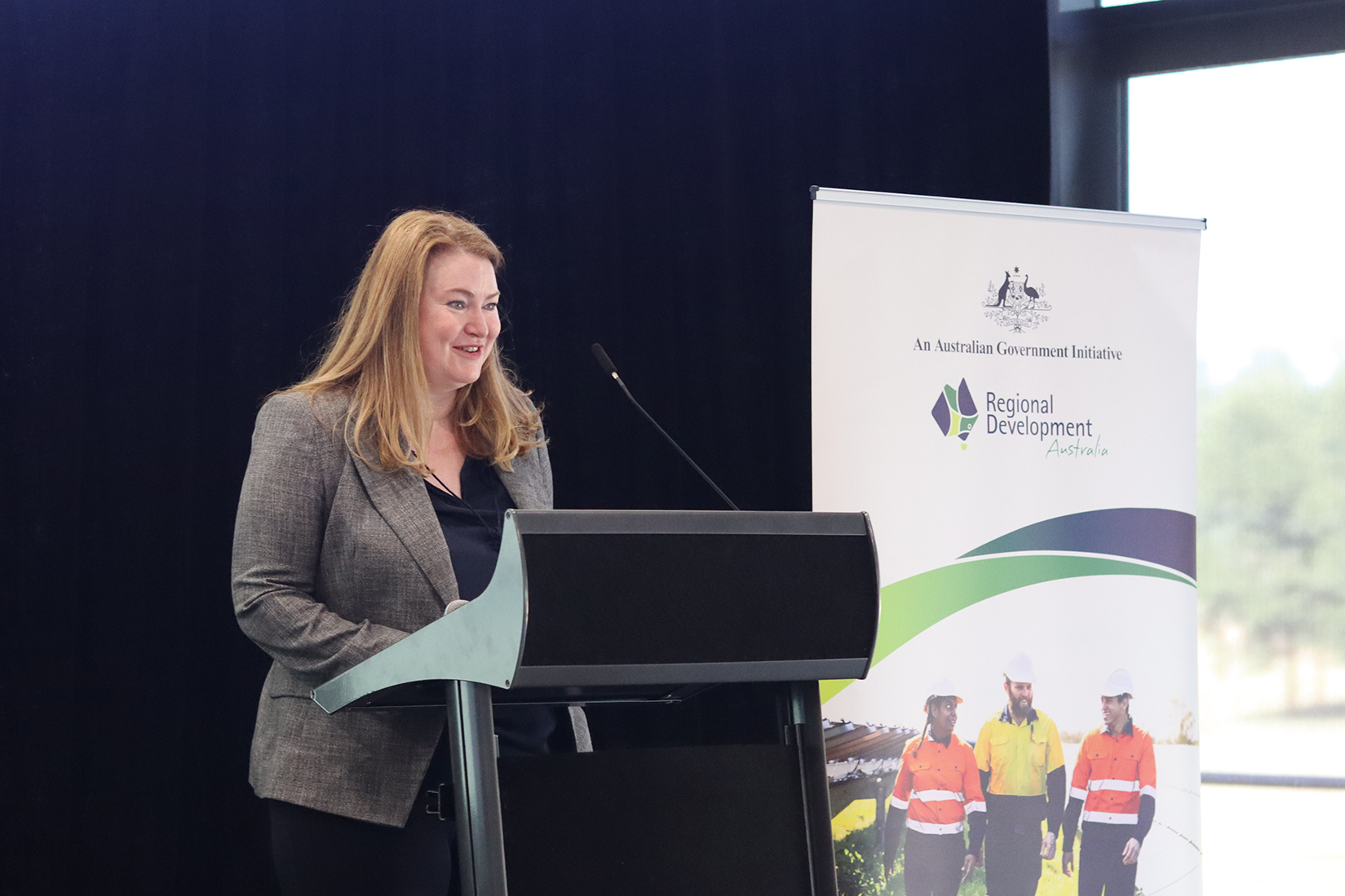
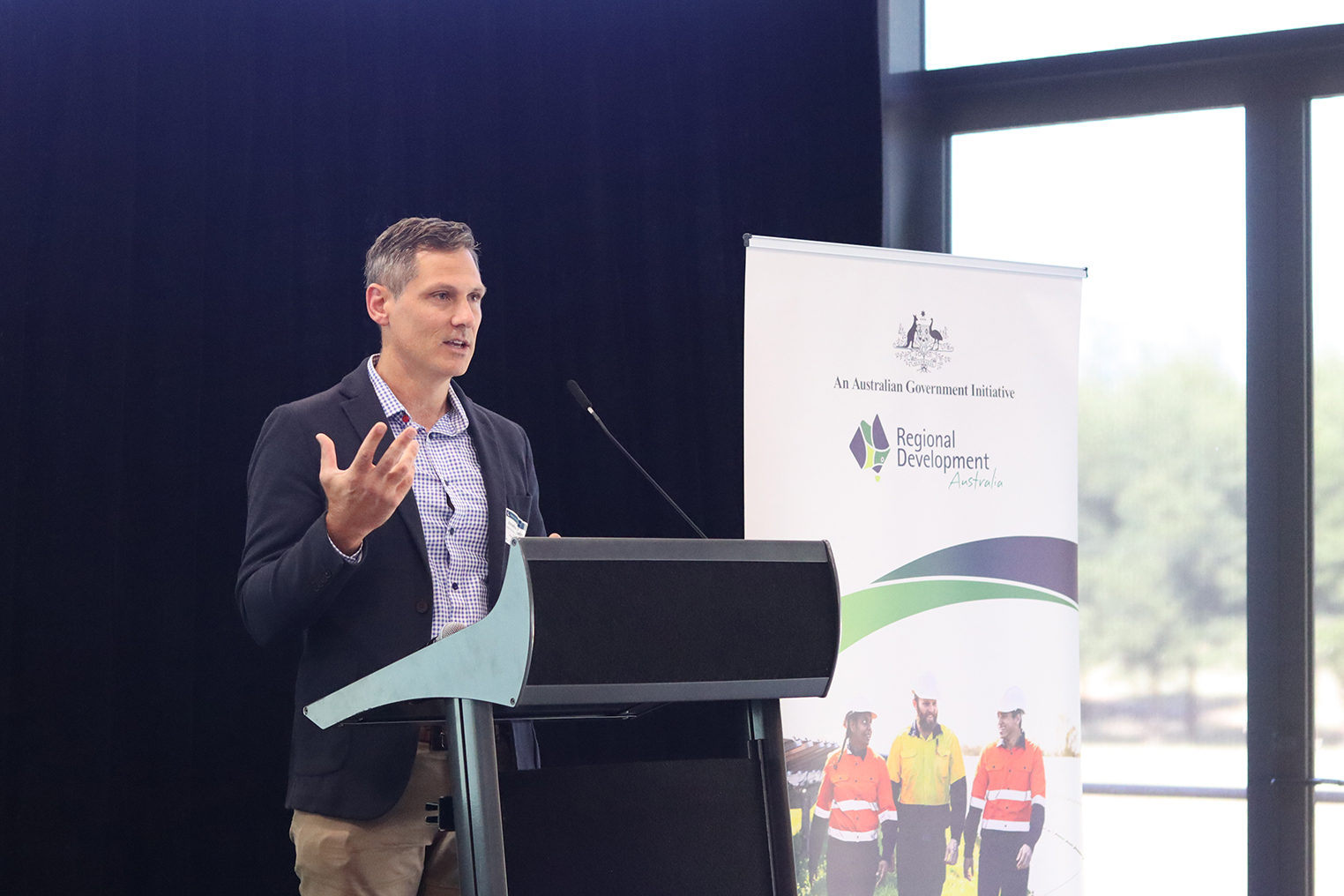
Highlighting the day’s theme, the Minister for Agriculture, Regional and Western NSW, Tara Moriarty opened the discussion by detailing the government's commitment to regional NSW through the investment of $1.8 billion to build on the strengths of the regions, investing in essential services and infrastructure, and improving service delivery and quality of life in rural and regional communities.
The Minister explained how the government was supporting targeted programs to ensure regional industries could thrive. She said when the people of our regions were supported, the whole state benefited. The Minister outlined the government's focus on providing targeted services and infrastructure where it was needed, to deliver real outcomes for people in the regions. She said the NSW Government was rebuilding and strengthening essential government services and taking measures that made a real difference to the long-term sustainability and prosperity of people in regional communities.
Working to make regional NSW an even better place to live, work, play and invest in, the audience heard from the Department of Regional NSW, Regional Development and Programs, Acting Deputy Secretary, Jonathan Wheaton. He explained the role of the Department and the Orana Far West Regional Development team who live and work in the region and support business, community groups, industry and local government by taking a fresh approach to how the government invests in regional NSW.
Jonathan highlighted current issues affecting the region including housing pressure and workforce and skills shortages while also discussing the support provided for business growth and job creation as well as partnerships that have been developed to achieve successful outcomes. He also provided an overview and timeline of the Regional Development Roadmap. The Roadmap is made up of three key elements including a new $350 million Regional Development Trust Fund, appointing a Regional Development Advisory Council and modernising the Regional Development Act 2004. As part of the process, public consultation began in November 2023 with the release of an issues paper on the changes to the Regional Development Act which will close in January 2024. Announcement of the Regional Development Advisory Council membership will occur in December 2024, who will work on recommendations to the Minister on changes to the Act and the governance of the Regional Development Trust. From March 2024 proposals, policies and programs will be considered by the Council and recommended to the Minister for investment under the Trust.
Jonathan said The Regional Development Trust Fund would provide for secure, sustainable and strategic investment for rural and regional NSW and reduce the reliance on grants as the primary source of government investment for communities and industry.
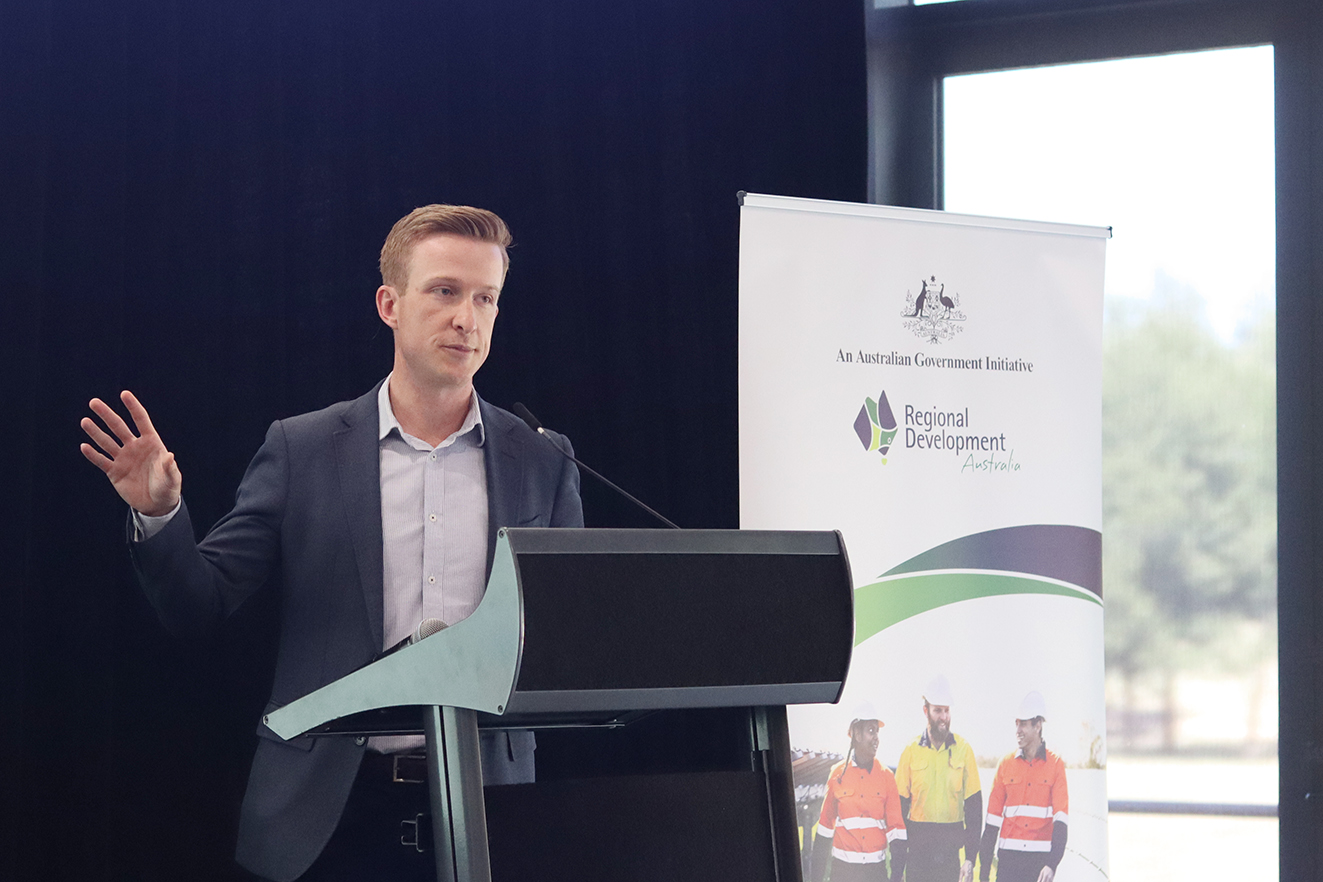
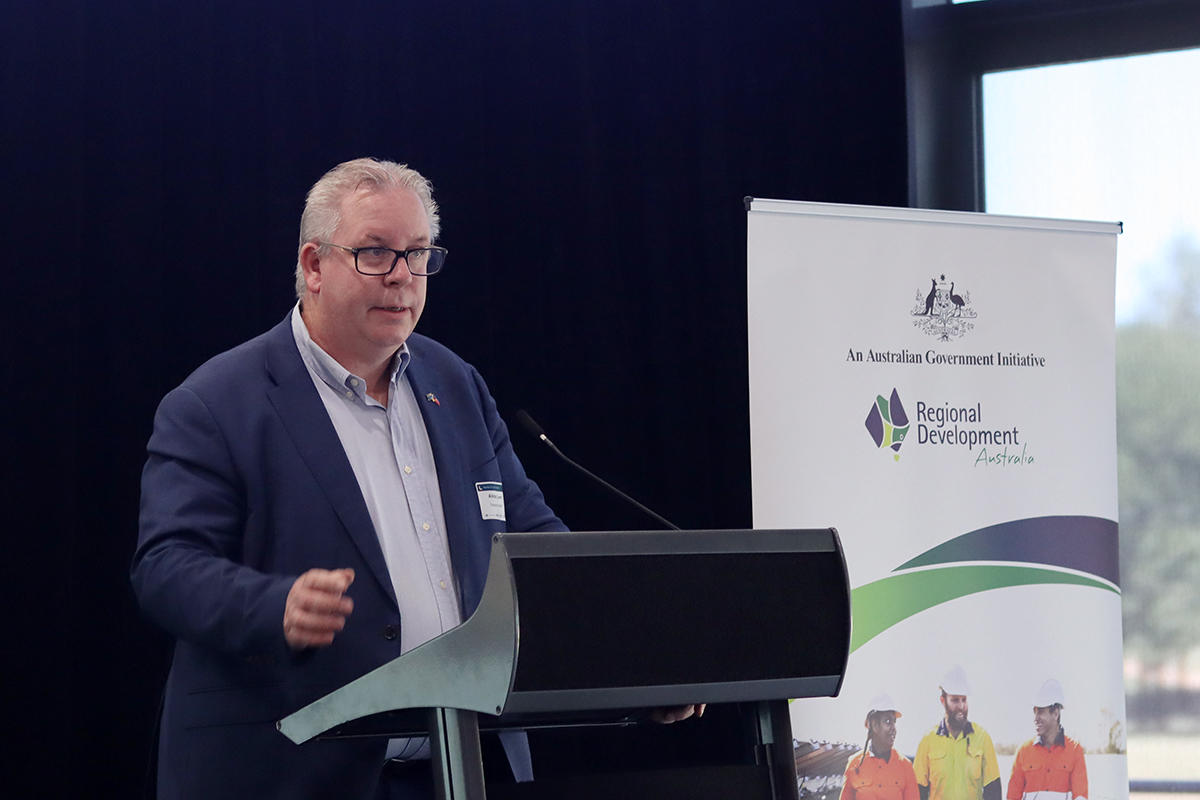
After a short break and some networking opportunities, EnergyCo Planning and Policy Director, Thomas Watt provided an update on the Central-West Orana Renewable Energy Zone (REZ).
Thomas explained the NSW electricity infrastructure roadmap - a 20 year plan to transform the electricity system into one that is cheap, clean and reliable and the role and responsibility of the Energy Corporation of NSW. He outlined the current status of the Central-West Orana REZ with the Environmental Impact Statement completed on 8 November and a response to submission report being prepared and expected to be publicly available in 2024. Planning approvals are expected in mid-2024 with construction anticipated to begin in late 2024. The REZ network should become operational in 2027-28.
Thomas explained a whole of government response to addressing the challenges that would arise from the development, which included the establishment of the Central West Orana REZ Steering Committee with project groups formed to address specific issues such as housing and accommodation, community infrastructure and services, roads and transport, environmental delivery coordination and economic development and participation, along with a number of agency and delivery partner agreement. He said EnergyCo was developing a community and employment benefit program to ensure REZ communities received benefits from the renewable energy transition with $128 million allocated for community and employment benefits and projects.
Thomas also detailed the many training, employment and business opportunities that would result from the REZ with an increased need for workers through a REZ-wide program to support new workers into the renewable energy industry and a worker attraction strategy. He said EnergyCo was working closely with First Nations communities through regular consultation with the FIrst Nations Working Group and registered Aboriginal parties and was currently recruiting a new First Nations Outcomes team.
Thomas concluded by saying the organisation would continue to tailor initiatives to the unique needs and priorities of communities where new energy infrastructure was built.
Responsible for ensuring safe and efficient transport systems for the region, Transport for NSW Regional Director West, Alistair Lunn explained the current condition of the network following two successive wet winters and the worst flooding on record. He said the seasonal conditions had created widespread saturation and deterioration to the state road network, with more than 2,500 km of damage to roads, including slopes, culverts and bridges, which had impacted on annual maintenance programs and created delays to some projects.
Alistair provided an overview on the department’s social procurement and workforce development program, which focuses on jobs, skills diversity and business initiatives that achieve local economic and social outcomes. He then highlighted some of the major infrastructure projects being completed in the region including the new Dubbo bridge - expected to be completed in 2026 which will improve travel congestion and freight productivity; Newell Highway overtaking lanes - delivering 38 overtaking lanes and 60 km of extra overtaking opportunities while improving safety and saving 30 minutes travel time; and the Mindyarra Maintenance Centre - a purpose built maintenance centre to service the new regional rail fleet, with completion expected by the end of 2023.
Alistair also explained the impact of the Central-West REZ project, which would see between 10,000 and 20,000 over-size over-mass movements on the road to service wind farm developments, the establishment of a dedicated transport team to oversee the movements across the state road network as well as planned road upgrades to minimise disruptions and create a safe travel environment.
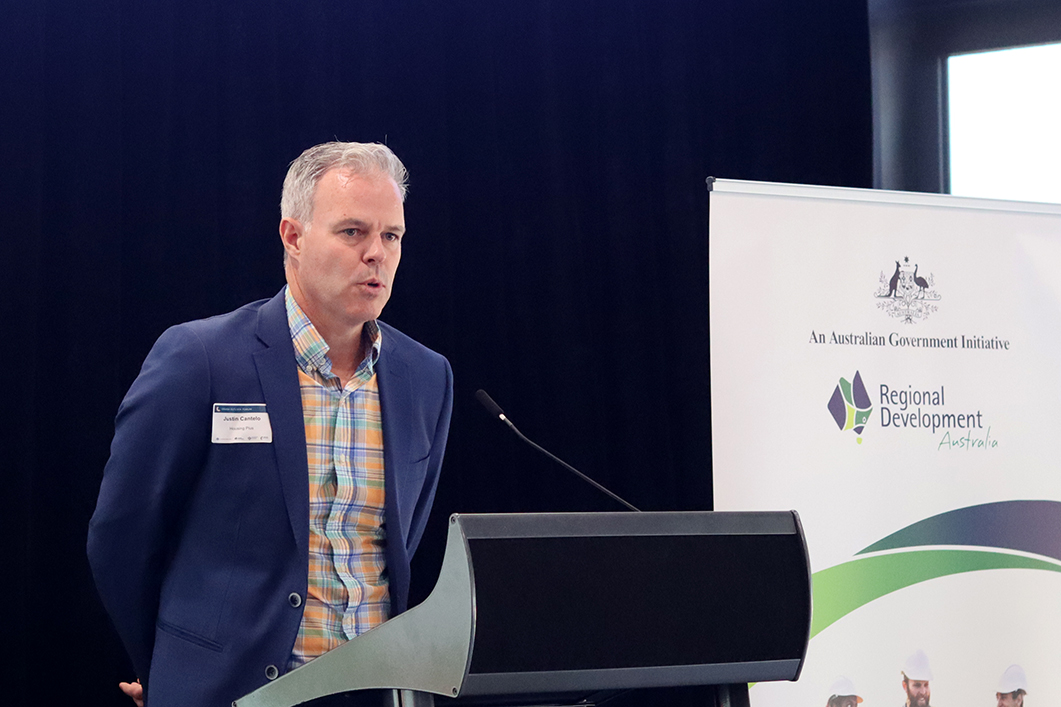
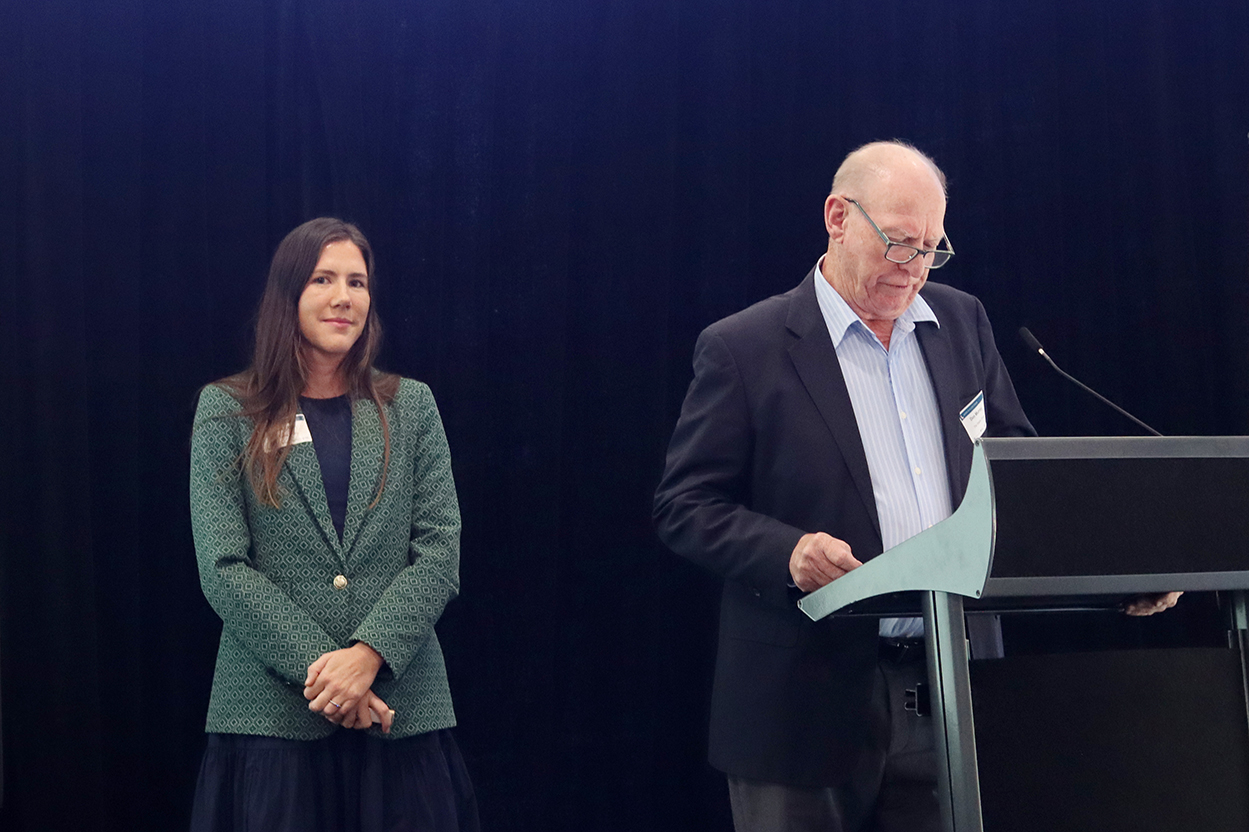
With investment being poured into the region along with a growing workforce, Housing Plus CEO, Justin Cantelo explored how the availability, diversity, and affordability of key worker accommodations were fundamental to economic growth and meeting the changing demands of regional communities.
Justin provided an affordable housing outlook, which saw regional NSW and the Orana region heading towards a serious housing crisis due to the impact of infrastructure projects on rental markets, the decrease of rental housing supply with a rise in short-term accommodation (Airbnb etc) and a decrease in development application numbers for residential dwellings. He explained that vacancy rates were at an all time low of 1.73% and rental prices had increased significantly. Using Dubbo as an example, the city’s vacancy rate was 0.8% and the share of income spent on rent was 29%, being classified as moderately unaffordable.
Looking at opportunities and supply solutions, Justin spoke about the National Rental Affordability Scheme, Social and Affordable Housing Fund and Housing Australia Future Fund. He also outlined the benefits of build-to-rent large scale, purpose-built housing, focusing on various apartment types and sizes along with incentives to support the construction of this style of housing.
In 2022, RDA Orana achieved a significant milestone with a successful grant of more than $665,000 to produce the Orana Hunter Connections and Beyond – Golden Highway Transport Study. This project is being undertaken by The Stable Group and is crucial to ensuring reliable and efficient transport links between the east coast and the Orana region, from rail to road and air.
The Stable Director, Don Murray and Engineering Consultant, Grace Elliott provided an update on the transport study, the future of freight in the region and the next steps for the study. They outlined new data insights explaining the study would be the first time specific freight data had been gathered, quantified and publicly shared to inform future infrastructure improvements, and identified variations between previous desktop studies versus stakeholder consultation, explaining that past studies had missed freight data from the Orana region’s hubs such as Cobar, Narromine, Coonamble and Dubbo which had led to a planning shortfall for increasing transportation demands. They also emphasised that the study would redefine freight dynamics and the role of the freight route to and from the Port of Newcastle, reflecting advancements in transport capabilities and supply chain evolution.
Further findings revealed that by mid to late 2020s rail freight on the Main West rail line would be constrained due to increased passenger demands, and increased road and rail networks through the Port of Newcastle would be essential to provide productivity and efficient service of imports due to pressure on other ports and networks.
It was also identified that without change, five million containers would be required on road through Port Botany/Port Kembla to service the increased population - in comparison to today’s two million containers currently transported via road, and the Orana, Central West, Hunter, Northern NSW and the Port of Newcastle would require better road and rail networks including distribution centres and empty container parks.
It was expected that future freight flows would increase by 17% over the next five years highlighting the need for infrastructure funding to accommodate the surge in demand. Key initiatives of the study include streamlining freight transportation through strategic developments, expanding and improving airport and defence capabilities, fostering dynamic precincts to drive regional growth and innovation and boosting regional connectivity and safety through strategic enhancements and upgrades.
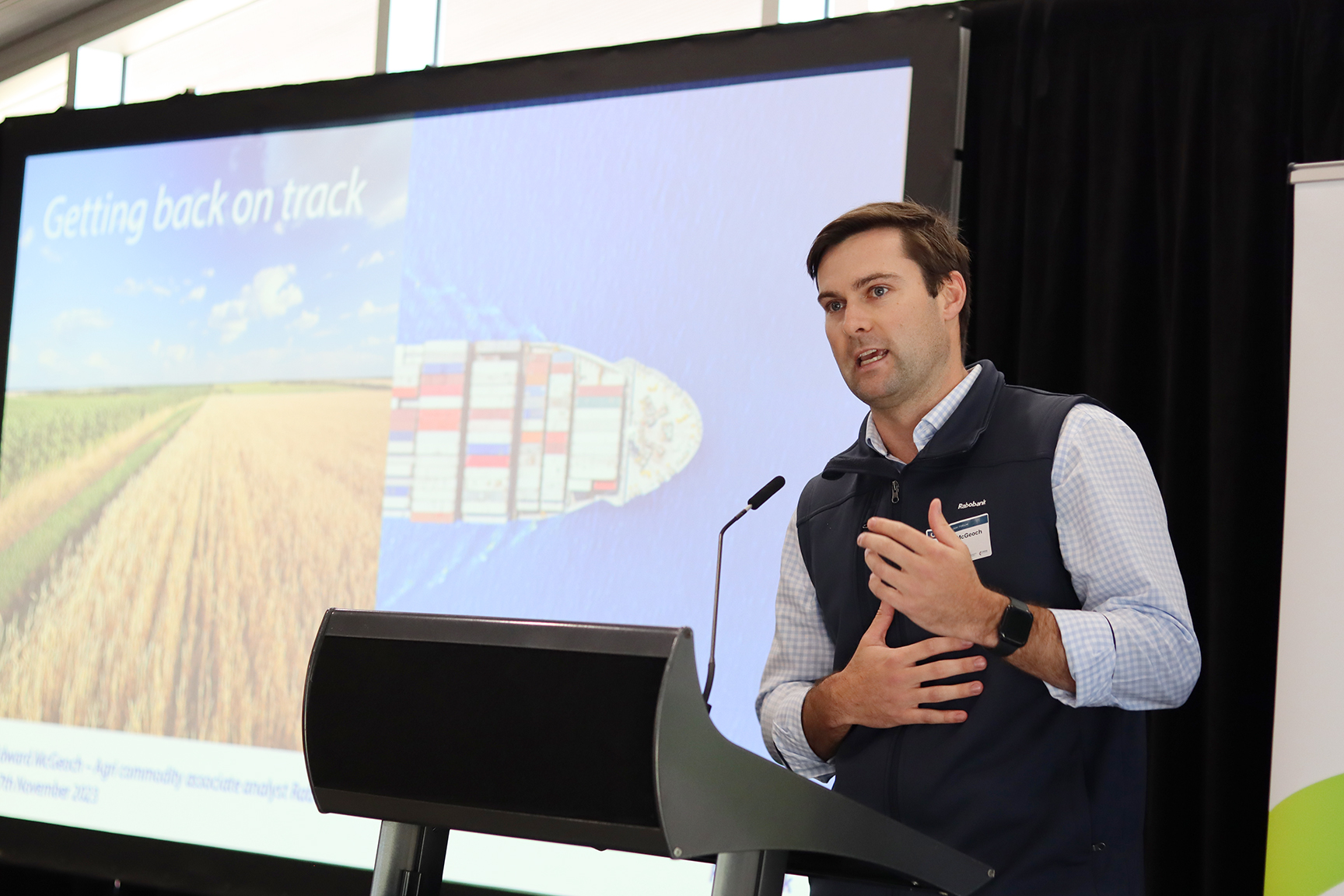
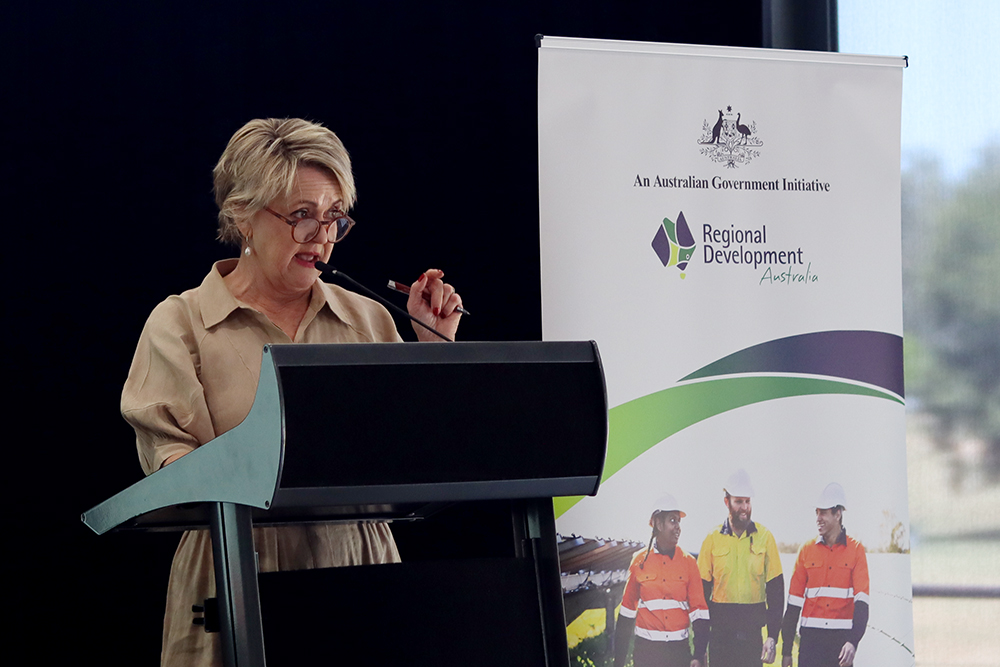
At the heart of the Orana region is the agricultural industry, it plays a significant role in the economy and is the largest employer in our region. Rabobank Australia Agri Commodity Associate Analyst, Edward McGeoch provided an outlook into the sheep and beef markets, the winter crop production forecast along with a market outlook for grains and oilseeds prices.
Edward explained that sheep and lamb slaughter numbers were at record levels and the highest in the past 20 years. Lamb exports were up by 12% with a 69% increase to the Middle East (YTD) being the highest monthly volume since 2018 and perhaps the second highest on record, a 34% increase to China, however the US market reduced by 16%. Mutton exports were up by 48% recording a 90% increase to the Middle East and a 74% increase to China - the third highest volume recorded, while the US exports were down 15%.
The East Coast cattle slaughter numbers increased by 26%, but only up by 8% on a five year average for October, he explained that numbers were down by 26% for this time of year. Edward said the beef export market to the US was up by 73% (YTD), but still only half of the volume when compared to 2014, the market to China was up by 29%, but again below the highs of 2019 while Korea was up 17% and Japan was down 7%. Edward reported that the US market would provide upside pressure to cattle prices in 2024, and expected an increase by 6% and a further 23% in 2025. He expected an average season this year, a dry season for 2024 and another average season for 2025.
For lambs he anticipated prices to be soft, waiting for demand to recover or supply to contract. Sheep slaughter prices were up 18% this year based on year to date and were expected to increase 11% in 2024 and 13% in 2025. Lamb slaughter prices increased by 2% this year with projections of 3% in 2024 and down 1% in 2025. Yardings were up 4% in 2023 and were expected to remain the same for 2024. US prices decreased by 20% for 2023 and further drops by 2% were anticipated for 2024. There was a 4% increase in inventory this year and an expected 1% increase for 2024.
After three consecutive strong harvests, Edward said Australian grain and oilseed production was set to return to more modest totals for the current season as the country experiences drier growing conditions. He said Australia was on track to harvest a total winter crop of 48.72 million tonnes for the current season. While down 24% on last season’s record-breaking 63.85 million tonne national crop, this was still close to the five-year average and above totals recorded in 2018/19 and 2020/21.
Edward reported that all cereal and coarse grain production – including wheat, barley and oats – was expected to decrease this season, with wheat declining the furthest, down to 26.9 million tonnes. Total tonnage for NSW winter crop was forecast to decline 27% on last year (to 11.03 million tonnes).
The state’s central and north west regions have been worst hit by dry spring conditions and lack of rainfall totals during the growing season, with only 70% of total planted crop area expected to be harvested in some parts.
From black opals to fine red wines, the Orana region stretches from the hilly western slopes of the Warrumbungle Ranges in the east, to the flat plains in the west and north to the Queensland border. Destination Country and Outback NSW General Manager, Lucy White explained the visitor economy and detailed what it meant and how tourism supported the region.
Lucy provided an overview of Destination Country and Outback NSW explaining that it was one of seven destination networks and covered 45% of the state. She said the Country and Outback NSW region comprised 25 local government areas and was organised into three main subregions: Outback NSW, New England North West, and Greater Central Plains. She said the Country and Outback NSW Destination Management Plan had been designed to align with the NSW Visitor Economy Strategy 2030 and guide the work of the organisation to grow the region’s visitor economy.
Lucy explained that tourism was now often referred to as the visitor economy and what was once defined as a leisure visitor had changed to be made up of anyone who provides or promotes services to visitors. She said those visitors included leisure and business travellers, events travellers, those visiting friends and relatives, students and people travelling on working holiday visas.
Lucy provided an overview of the NSW Visitor Economy Strategy 2030, which has a vision to be the premier visitor economy in the Asia Pacific by 2030. The strategy had three phases in response to the impact of the COVID-19 pandemic, which included: Recovery phase to 2024 - with a focus on assisting businesses and the industry to rebuild, with a goal of returning total visitor expenditure to pre-Covid levels of $43 billion in 2019. Momentum phase to 2026 - where the visitor expenditure is expected to grow strongly to reach over $50 billion by 2026 and the Accelerate phase to 2030 - where it is expected the visitor economy from the previous phases will accelerate growth with expenditure expected to reach $65 billion by 2026.
Lucy said the last few years had been challenging for the industry but things were looking up and the visitor economy was big business in the Destination Country and Outback region. She reported there were 5.7 million visitors in 2022 and every year almost $3 billion was being spent in the region - that’s $6.3 million every day or $4,351 being spent in someone’s business in the region every minute. Lucy explained the visitor economy delivered more than one $1 billion or 3.6% gross added value and had increased annually since 2011 at 5.3% and supported 6.9% of the region’s jobs with 5,487 businesses. She urged attendees to invest in the visitor economy as it provided a platform for jobs and investment, and gave culture a voice.
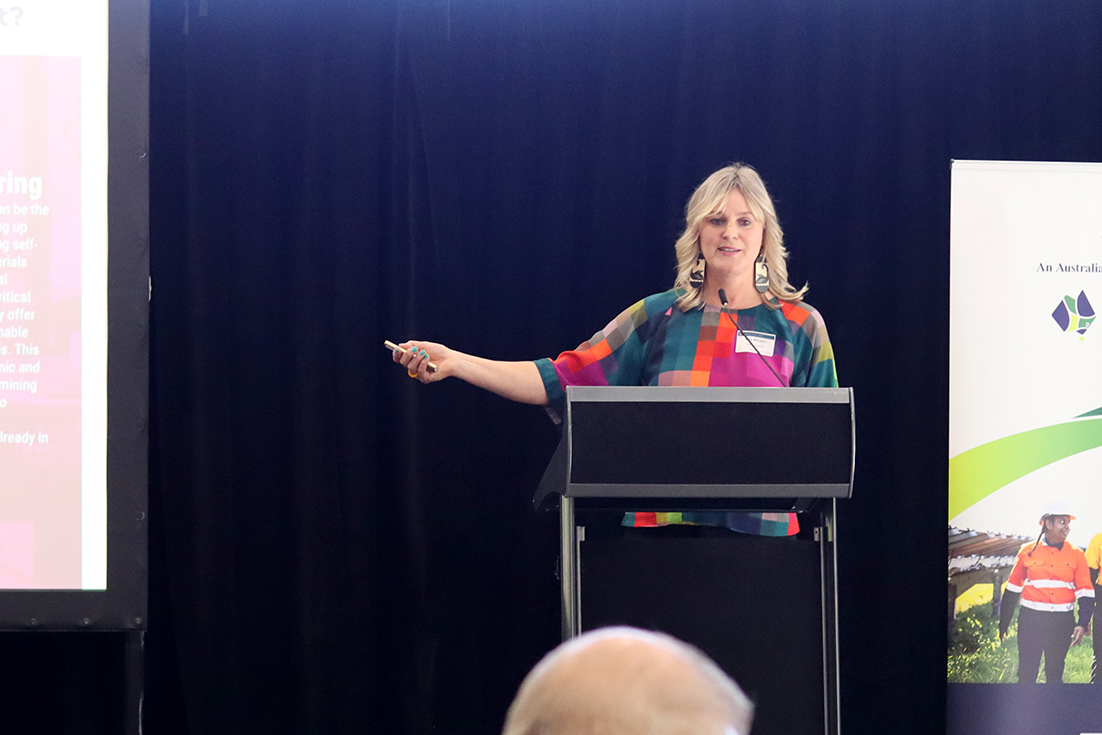

Keynote speaker for the event, Circular Australia Managing Director and CEO, Lisa McLean provided a lunchtime address at the forum discussing the benefits of a circular economy. Lisa detailed how the escalating global situation was becoming worse year on year - driven by rising material extraction and use, with a huge circularity gap with the globe. More than 90% of materials were either wasted, lost or remained unavailable for reuse for years. She said materials that were cycled back into the global economy after the end of their useful life, accounted for 7.2% of all material inputs into the economy and this was the circularity metric.
According to a CSIRO report to the Commonwealth Department of Environment and Energy in 2019, Australia’s circularity rate was between 3.5% and 8.6%.
Lisa explained the definition of a circular economy as decoupling economic growth from the consumption of finite resources and designing waste out of the system and identified three principles to base the economy on:
- Designing out waste and pollution at every stage of production, use and end-of-life.
- Keeping products and materials in use at their highest possible value.
- Regenerating natural systems for example through water, food, organics recycling, the removal of toxic waste, tree planting.
The Australian Government has set a target to develop a circular economy by 2030 and agreed to work with the private sector to design out waste and pollution, keep materials in use and foster markets to achieve that target.
Lisa reported that Australia was now developing a roadmap to the circular economy, which required working together. She explained that not one business, not one person or one government could make the transition on their own. She spoke about the formation of the Circular Economy Ministerial Advisory Group, which would guide Australia’s transition and finalised a workplan with seven meetings over two years each focusing on different topics which represented sectors where there were the biggest opportunities for driving the country towards a circular economy.
Lisa said there were significant economic opportunities available with an estimated $1.9 trillion economic boost over the next 20 years from circular solutions; hundreds of thousands of new full time jobs could be generated through the $15 billion National Reconstruction Fund, which supported made in Australia, re-made in Australia and buy Australian. She outlined some of the key sectors that would catalyse the circular economy in Australia and included infrastructure development, special activation precincts, households and manufacturing through recycling industries.
Lisa explained the role of regional Australia in the circular transition with opportunities in energy, waste, transport and water. She also spotlighted projects including the Parkes Special Activation Precinct, which was being built on already-planned private and government investments, creating up to 3,000 jobs across a range of industries and was Australia's first UNIDO Eco-Industrial Park. The precinct offered sustainability solutions, including waste and water reuse and energy use and generation. Another example was the Cool Compost Project, being undertaken in partnership with Circular Australia and NSW EPA - the program and grants funded 38 ground-breaking projects and an example of how Circular Australia was supporting evidence and best practice.
In applying the circular economy to regions, Lisa said this would require education and collaboration from all sectors including tourism, agriculture, energy, transport and housing.
BROUGHT TO YOU BY

